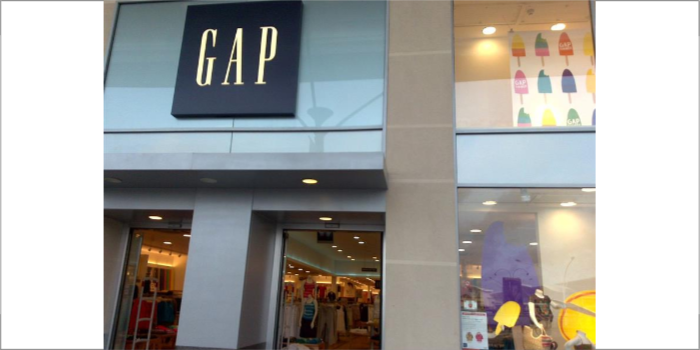
Gap joins Trust Protocol & Textile Exhange’s Challenge
Gap recently joined the US Cotton Trust Protocol and Textile Exchange’s 2025 Sustainable Cotton Challenge as part of its integrated sustainability strategy and to achieve its commitment to use only 100 per cent sustainably-sourced cotton by 2025.
Gap
recently joined both US Cotton Trust Protocol and Textile Exchange’s 2025
Sustainable Cotton Challenge as part of its strengthened commitment toward its
goal of 100 per cent sustainable cotton by 2025. Sourcing Trust Protocol cotton
will help Gap meet its science-based target to reduce GHG emissions and water
stewardship commitment.
Gap’s
target of sourcing 100 per cent of its cotton from more sustainable sources by
2025 is set across its collection of purpose-led lifestyle brands
including Old Navy, Gap, Banana Republic, and Athleta. The Trust Protocol
will help Gap meet this goal by providing verified data on the sustainability
practices used on US cotton farms. Participating cotton growers will benefit
from data-driven insights and best practices from across the industry, as well
as a stronger connection to brands asking for sustainably-grown cotton. The
Trust Protocol opened for membership in October 2020 and provides brands and
retailers with the critical assurance they need to prove that the cotton in
their supply chain is more responsibly grown.
“Continuous
improvement is important to Gap, which is why we have decided to begin sourcing
more sustainable fibre through the US Cotton Trust Protocol. As part of our commitment
to address climate change by aligning with the best science and industry
practices, we have ambitious targets across metrics to lower carbon emissions
and preserve precious natural resources like water. As an American company with
purpose-led brands committed to sustainability, joining the US Cotton Trust
Protocol makes perfect sense,†said Alice
Hartley,
Director of Product
Sustainability, Gap. “With two thirds of US cotton not using any irrigation
at all, this allows us to further our commitment to sustainable cotton and
enables us to support US cotton grower,†Hartley added.
The
US Cotton Trust Protocol underpins and verifies sustainability progress through
sophisticated data collection and independent third-party verification. Member
brands like Gap have access to aggregate year-over-year data in six areas:
water use; greenhouse gas emissions; energy use; soil carbon, soil loss and
land use efficiency.
“Gap’s
brands are in every household, including my own, and I am personally honored it
has chosen to work with us because it’s a global company that takes sustainability
seriously,†said Gary Adams, President,
US Cotton Trust Protocol.
“Gap
has made significant strides since setting sustainability goals, and the Trust
Protocol’s farm-level data will help it in its mission to improve its impact
and protect our natural resources. By signing on to the Trust Protocol, Gap
will support our shared mission to educate US growers around the most
sustainable growing practices and support grower enrollment,†Adams further
added.
In
addition to joining the US Cotton Trust Protocol, Gap has also accepted the
Textile Exchange 2025 Sustainable Cotton Challenge. Formed in 2017, when His
Royal Highness The Prince of Wales convened a group of CEOs to address critical
challenges facing the world, it is the vision of the 2025 Sustainable Cotton
Challenge that more than 50 per cent of the world’s cotton is converted to more
sustainable growing methods.
Brands
and retailers joining the challenge and committing to source more sustainable
cotton can choose from Textile Exchange’s list of recognised organic and
sustainable cotton initiatives, which have the ability to increase the income
of smallholder farmers, eliminate highly hazardous pesticides, eliminate or reduce
the amount of pesticides and synthetic fertilizer used, reduce water use and
improve water quality and soil health. The US Cotton Trust Protocol was
recognised as one such initiative in April 2020.
Gap
began sourcing from more sustainably-grown cotton programs in 2016 and within
just three years more than half (57 per cent) of the cotton in its products came from
these sources. It has joined the US Cotton Trust Protocol and the 2025
Sustainable Cotton Challenge to help enable it to bridge the remaining 43 per
cent to use 100 per cent sustainably-sourced cotton across all its products by 2025.
The
US Cotton Trust Protocol enables brands and retailers like Gap to better track
the cotton entering their supply chain: the combination of a unique credit
accounting system and the Permanent Bale Identification (PBI) system enables
brands to have improved transparency throughout the supply chain. The Protocol
works together with Field to Market: The Alliance for Sustainable Agriculture
and Control Union Certifications North America, and is on the Textile
Exchange’s
list of 36 preferred fibres and materials from which more than 170 brands and retailers
can select through Textile Exchange’s Material Change Index programme. It is also
part of Cotton 2040 and the CottonUp guide.



